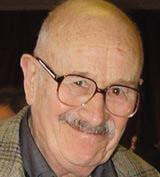Good strategic thinking
David Bernstein thinks the distinction between designer and strategist blurs when creatives are asked to think laterally to solve a brief.

Would the design world of 1880 have quibbled had John Ruskin been made that year’s designer or joint winner with William Morris? The theorist and critic was arguably as instrumental in the Arts and Crafts movement. Morris was a commercially successful designer, a manufacturer and, though not as insightful a thinker as his colleague, able to give form to Ruskin’s philosophy. Hyland would presumably rule out Ruskin’s candidacy, arguing, ‘The ‘designer’ cannot merely facilitate, but must be instrumental in the craft that will deliver great design.’
Few would argue with Gary Holt (DW 16 June) or Hilary Cottam herself (DW 23 June) that design is about problem-solving. But what if the solution is a triumph of thinking rather than making? Would that qualify as a ‘design solution’? Perhaps, had a designer done the thinking, but not presumably had a ‘strategist’. Yet a strategist is capable of achieving a creative breakthrough by looking at a problem in a new way. The renaissance of Lucozade owed a little to the redesign of the pack, but a lot to the strategic insight that the brand should move from an ‘aiding recovery’ to a ‘maintaining health’ positioning. It is doubtful if that strategy was ever publicly recognised or whether redesigning the brand’s image in the public mind is – strictly speaking – a design solution.
Most designers are strategists, yet too often their cerebral contribution is undervalued. The designer is generally called in too late or the design task is relegated to that of styling someone else’s solution. What distinguishes major design talent is their desire to get to grips with the problem, to query the form in which the problem is stated, especially if the brief points the way to a specific execution. Often the only way to understand a problem is to redefine it. This may incur the impatience of the client, but if it results in a more efficient solution, trust between client and designer grows and next time the designer may be invited not just to answer the brief, but to help write it.
This is the designer’s prime skill – as thinker, analyst, interpreter. The second is that of intermediary, acting, in Rita Siegel’s words, as ‘user’s advocate’. The designer works with the client but for the consumer, facilitating, clarifying, making product values visible and easing the conveying of information.
The third skill is that of organiser of material, the ability to impose what Victor Papanek calls ‘meaningful order’.
A fourth skill is that of team player, an aptitude for working with other specialists (see Janice Kirkpatrick and Luke Pearson, DW 23 June). The accomplished team player may progress to project leader, someone like Cottam, described by Stuart MacDonald (DW 23 June) as ‘an articulate protagonist of design as a strategic tool’. Whether you can learn to be a project leader without having first practised the other skills of the ‘fully fledged’ is at the heart of Hyland’s ‘fascinating debate’.
-
Post a comment



